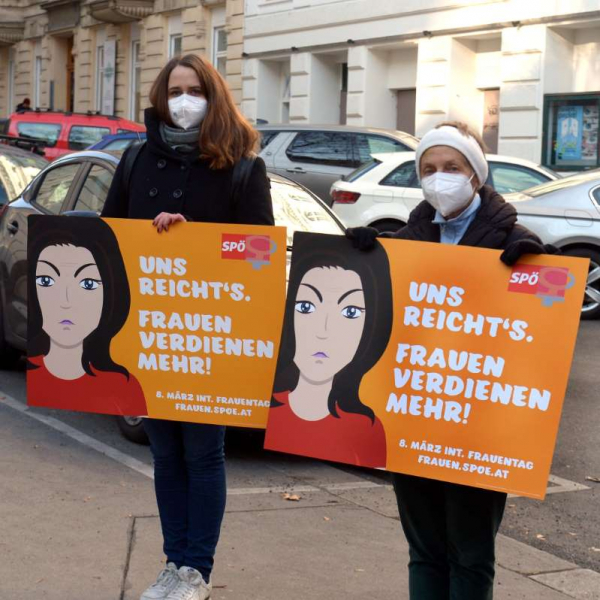For women, unemployment has a more negative long-term impact on income.

The gender pay gap between women and men has narrowed in recent years. The corona pandemic and its consequences threaten the gender gap in incomes again, warns the economic research institute (Wifo). This is because declining employment and rising unemployment have a more negative long-term effect on income for women than for men, starting from a lower level.
According to a research paper written by university professor Christine Zulehner and Wifo economists René Böheim and Marian Fink, every missing year of work reduces the life income of women due to the lower average number of years of work than men has been.
Women are affected differently by the crisis than men, and the differences could contribute to the wage gap increasing rather than decreasing in the coming years. Women initially lost their jobs less often than men, but the losses were concentrated in a few economic sectors that are important for women's employment.
At the turn of the year 2020/2021, on the other hand, women were significantly more affected by unemployment than men compared to the previous year due to the ban on providing body-friendly services and the failure of winter tourism. If these sectors of the economy create fewer jobs after the crisis, then relatively more women than men will change sectors, which is associated with a loss of know-how and can lead to lower wages.
The double burden of work and care duties, especially in the “home office”, also affects women more than men. According to their own statements, during the Corona crisis, women increased their time for housework and, in particular, for childcare more than men. If women are therefore less able to take part in further education or training courses, are less able to maintain professional networks, etc., then a relative loss of wages is to be feared for this reason as well. The very concrete effects on the gender-specific wage gap cannot yet be estimated, as Austria is still in the middle of the crisis caused by Covid-19.
According to an analysis by the social-liberal Momentum Institute, the billions in government aid to combat the corona crisis favor men more than women. Of the analyzed corona aid, endowed with a total of 58.03 billion euros by 2024, only 42 percent would benefit women. Of the decision-makers about the funds, only 40 percent are female. In absolute terms, this means that men will make over 11 billion euros more than women by 2024. In order to counteract this, the economists Anna Hehenberger and Anna Pixer call for greater consideration of the areas dominated by women within the framework of existing funding instruments as well as an increase in wages in the state's sphere of influence in systemically relevant professions or in professions with a high proportion of women.
Wifo also analyzed the development of the wage gap between men and women: The wage gap has narrowed somewhat. In 2005 women earned an average of 20.5 percent (in the private sector 24.1 percent) less per hour worked than men, if differences are not taken into account (“unadjusted wage gap”). In 2019, women earned an average of 15.3 percent (in the private sector 17.1 percent) less than men.
If differences are taken into account in characteristics that could be important for wage formation, i.e. school education, work experience, occupations, etc., the result is the “adjusted” wage difference. According to Wifo, this was between 6 and 11 percent in 2019, depending on the statistical method used.
The economically liberal Agenda Austria has also examined this: Economist Heike Lehner comes to a wage gap of 36.4 percent, if you compare the earnings of all employees with that of all employees. For full-time employees all year round, the gender pay gap drops to 14.3 percent; if industries, company size, training level, knowledge, position and professional experience are taken into account, the result is 3.5 to eleven percent. More childcare places are required, especially in rural areas.
In the Wifo paper there are also suggestions as to how the wage gap could be reduced: Measures that facilitate the participation of women in the labor market, such as the expansion of childcare facilities, can increase professional experience and thus reduce the gender-specific wage gap. Regulations that stipulate that the parental leave must be divided equally between the two parents could lead to lower wage differences.
Measures that lead to more wage transparency, such as the indication of collective bargaining minimum wages in job advertisements or income reports, can also improve women's chances in the labor market, as they strengthen their negotiating position. According to Wifo, companies can only afford unfair wage discrimination if there is little competition. For equality between women and men, more competition between companies is needed, as companies then have to pay more attention to the productivity of their employees and less to their gender.

